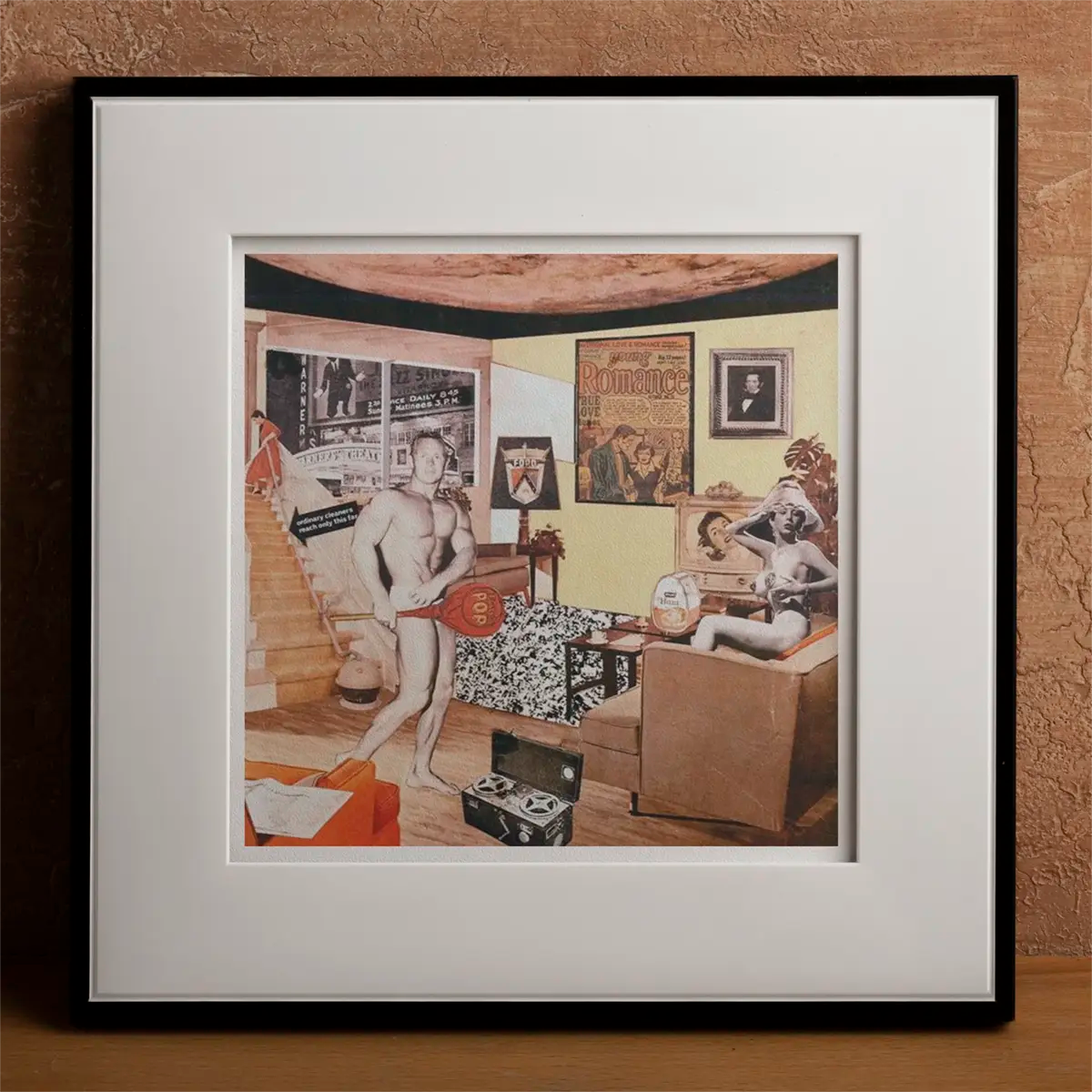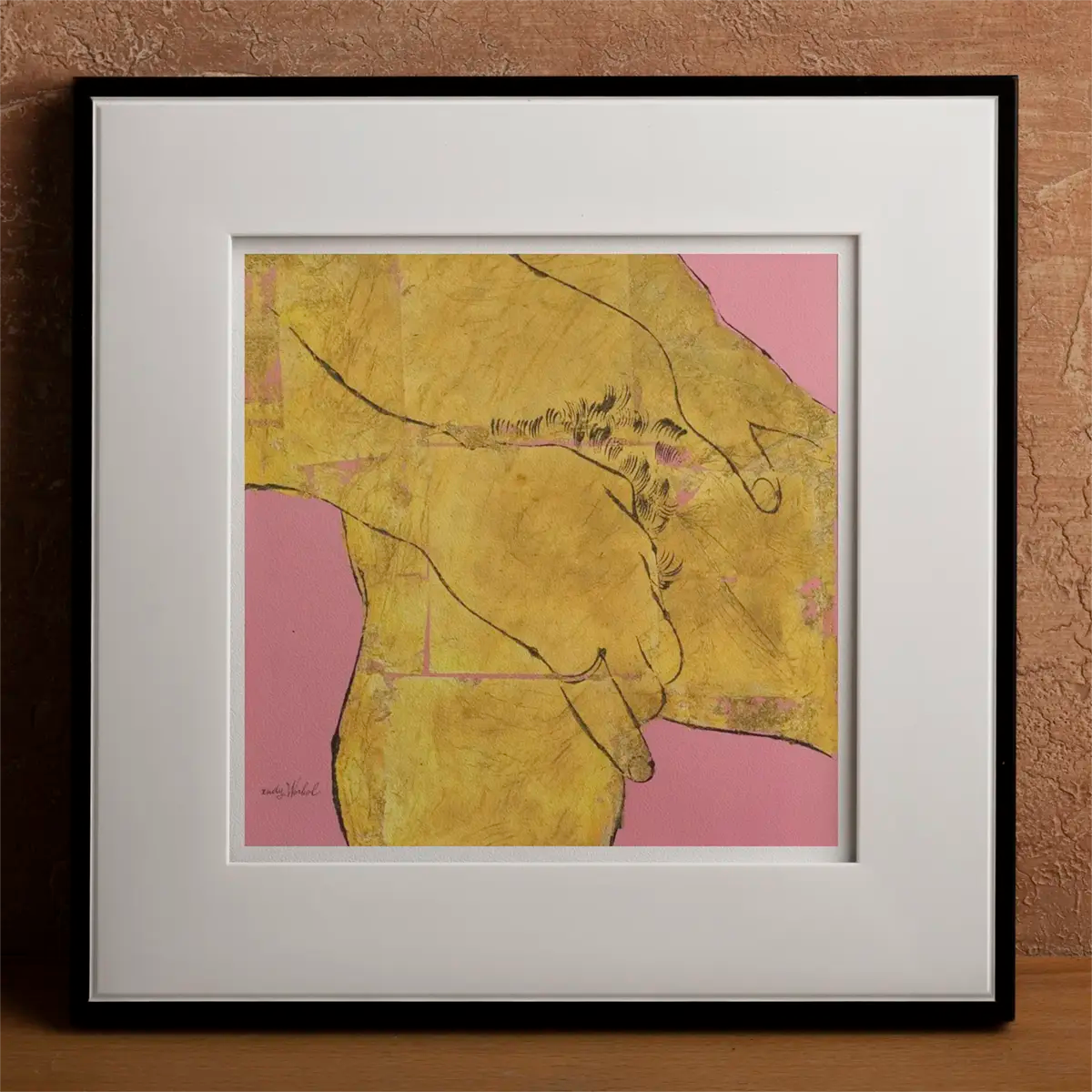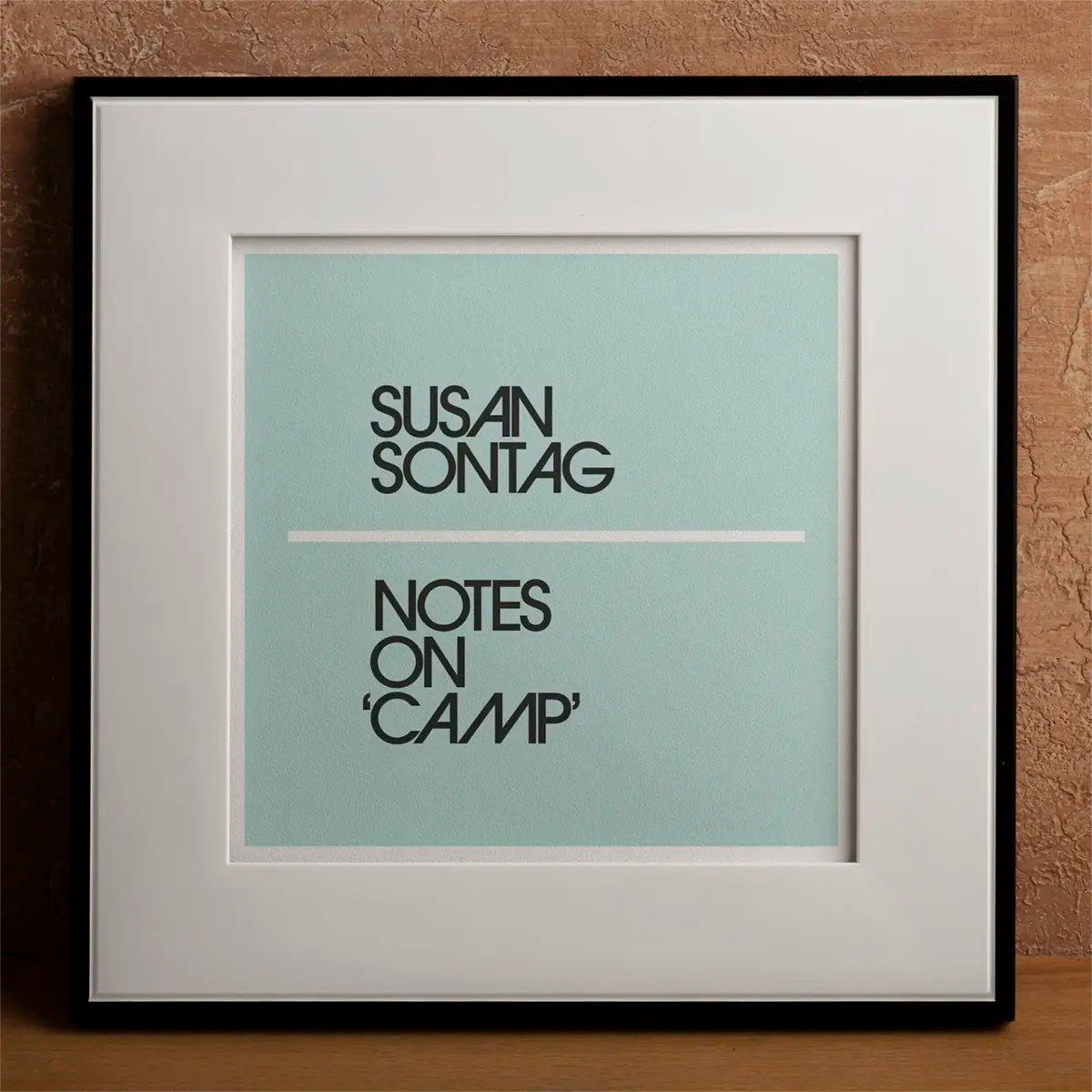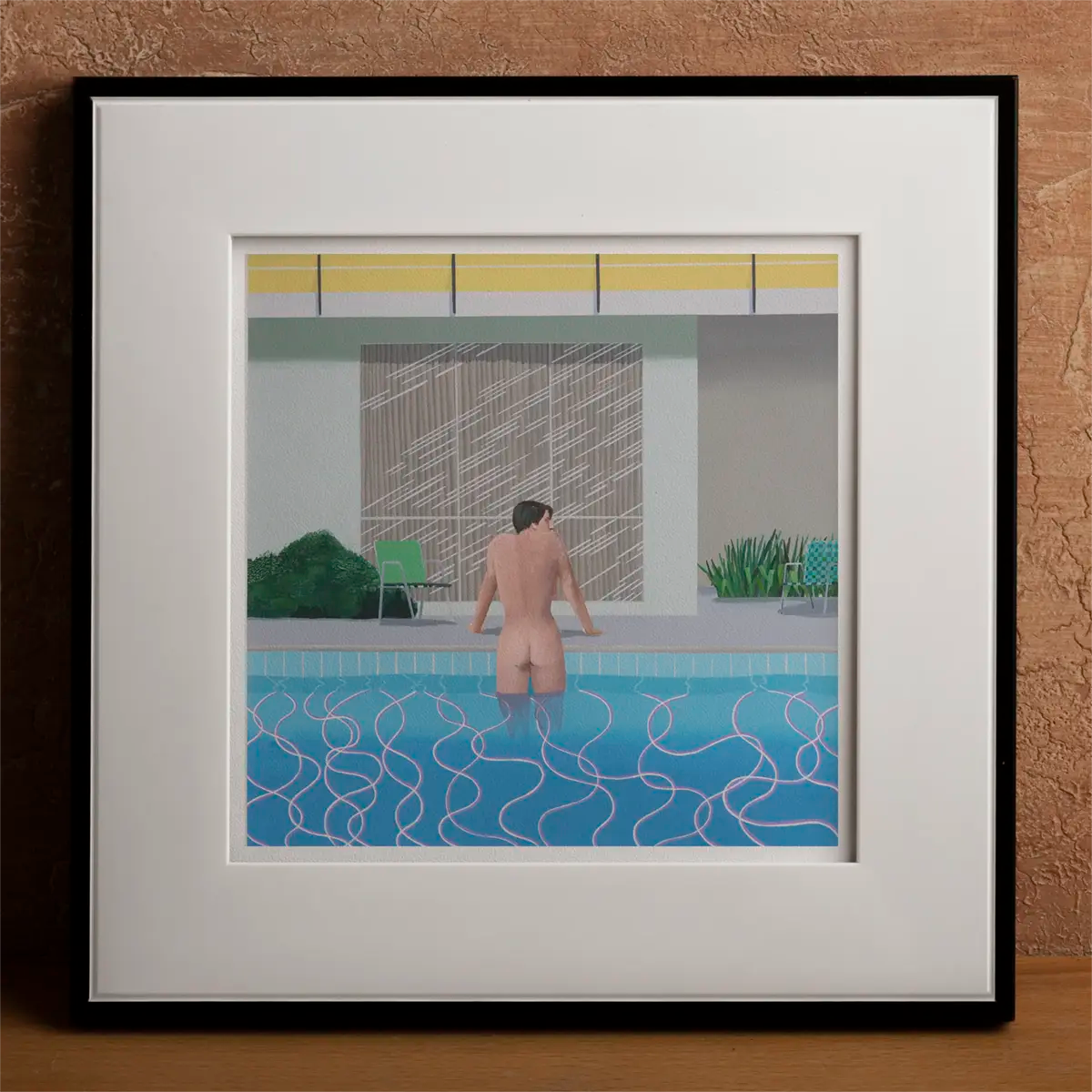On a sultry night in 1965, a curious question floated through the silver-painted loft of Andy Warhol’s New York studio, The Factory: “Do you think Pop Art’s queer?”
The air crackled with irony and mischief. Warhol—pale, wigged, and silently observing—was surrounded by a motley crew of superstars: drag queens in sequined gowns, poets and punks, underground filmmakers and rock musicians.
In one corner, the Velvet Underground struck up a droning melody for an eclectic crowd; in another, Warhol’s silk-screened portraits of Marilyn Monroe and Campbell’s soup cans lined the walls, glinting like holy icons of consumer society. The scene was outrageous and enchanting, a living collage of high kitsch and countercultural energy.
Here was Pop Art in action – not just as paintings on a gallery wall, but as an immersive haven where society’s outcasts and glitterati mingled freely, queer identity melded with artistic innovation, and the line between art and life all but vanished. This was the moment Pop Art ceased to be merely an art movement and became a social movement, reflecting its world back at itself in garish Technicolor while quietly inciting change.
That provocative question about Pop Art’s queerness was posed by art critic Gene Swenson during a 1963 interview with Warhol. It hung in the air like a gauntlet. Warhol’s response, characteristically coy yet telling, would never make it into the published article—editorial censors at ARTnews snipped away every mention of homosexuality from the transcript. But on the crackling tape of the conversation, recovered decades later, Warhol’s answer survives. “I think everybody should like everybody,” he offered quietly. When pressed, he clarified that liking without discrimination—liking men and women alike—was akin to being a machine, performing the same action over and over.
Oblique as it was, this was Warhol’s gently subversive creed: a vision of indiscriminate love and radical acceptance hidden within a deadpan joke about machines. In an era when police raids on gay bars were common and newspapers blared headlines about the “Growth of Overt Homosexuality” as social crisis, Warhol had learned the survival skill of subtext. If he couldn’t declare his truth outright, he would encode it in art and irony.
Years later, scholars would confirm what that night at The Factory made obvious: Pop Art was always, from its very inception, imbued with queer sensibilities and camp humor, wielded as tools of both expression and disguise.
Key Takeaways
-
Pop Art was queer from inception, thriving secretly in vivid hues and playful codes; beneath Warhol's glossy icons lay hidden revolts against mainstream norms and sexual oppression.
-
Camp sensibility, Pop Art's mischievous heart, weaponized kitsch and glamour to disrupt the borders between high and low, artifice and truth, transforming aesthetic rebellion into a political awakening.
-
Andy Warhol’s Factory—a dazzling, chaotic haven—didn't merely host art, but gave life to a social movement where marginalized queer identities boldly blurred the lines between art and reality.
-
From David Hockney’s subtly daring canvases to Keith Haring’s outspoken activism, Pop artists skillfully smuggled queer resistance into galleries, turning color-soaked rebellion into universal symbols of love and equality.
-
Decades later, Pop Art’s vibrant subversions resonate profoundly, its legacy visible in contemporary activism and culture, proving how art born in shadows and subtlety can blaze brightly into mainstream acceptance.


Richard Hamilton, Just What Is It That Makes Today’s Homes So Different, So Appealing? (1956)
Origins of Pop – New Art for a New World
Pop Art first emerged in the mid-1950s, almost simultaneously in London and New York, as the dust of war settled and bright, commercial images began to flood the cultural bloodstream. Art didn’t drift quietly into modern life—it arrived loud, vivid, and sharp-edged. In both cities, artists began to pull from the everyday spectacle—ads, comics, magazines—not as passive consumers, but as critics and remixers.
In London, members of the Independent Group seized on American visual debris. A world that was becoming ever more globalised meant a surge in U.S. products and fantasies crossing oceans. British artists dissected these images to expose their strange glamour and uneasy power. Meanwhile, in New York, the dominance of Abstract Expressionism was beginning to falter. A new generation rejected solemnity. They embraced the marketplace, not to praise it, but to crack it open.
From opposite sides of the Atlantic, Pop Art emerged not as harmony, but as friction—high and low, surface and code. The revolution began in glossy fragments.
British Beginnings
The Independent Group did not assemble to paint. They gathered to look. They studied the strange images flooding Britain’s postwar horizon—refrigerator ads, magazine clippings, Hollywood portraits—and asked what could be done with the wreckage.
Richard Hamilton took the answer into his hands. Alongside Eduardo Paolozzi and Pauline Boty, he cut and spliced a visual language that had arrived pre-saturated with meaning. In 1956, Hamilton created Just What Is It That Makes Today’s Homes So Different, So Appealing?, a collage that became Pop’s British genesis. It showed a nearly nude bodybuilder gripping a candy-colored lollipop beside a lounging pin-up glamour girl, inside a room crowded with consumer goods.
The image came with a queer pedigree. That bodybuilder was lifted from American bodybuilding ads, charged with a bright homoerotic electricity. Hamilton wasn’t parodying—he was decoding.
In that gesture, he echoed Cecil Beaton, whose 1930s scrapbook-style montages mingled male physique and feminine film-star glamour into a private, coded theatre. The lineage was unspoken but visible. Both artists composed using the available visual economy—but only to rearrange its logic.
What emerged in Britain wasn’t irony. It was resistance, saturated in camp sensibility, and shaped by a queer gaze trained on the grammar of mass culture. Pop didn’t reflect that culture. It cross-dressed it.
American Upheaval
Meanwhile, in the United States, New York’s galleries clung to solemnity. Abstract Expressionism still ruled—a language of gesture, introspection, and revered suffering. But outside the canvas, the city pulsed with images that made no room for mysticism. Shiny packaging. Television static. Comic book bang.
Pop did not announce itself with theory. It spilled out like a neon revolution. Onto magazine stands. Into storefronts. Through advertisements pinned to bus windows.
Warhol sensed it in the air. “New York is slightly homosexual… the crust of the middle class,” he said in 1963, a whisper pitched like a dare. Beneath that crust, something was rotting. Or ripening...
A group of young artists began dragging pop culture into the frame—bluntly, vividly.
Roy Lichtenstein painted romance comics and speech bubbles as large as murals. Claes Oldenburg molded stuffed hamburgers, plastic lipstick tubes, giant toilets. Andy Warhol, with his brushless, affectless style, screen-printed Campbell’s soup cans and Coca-Cola bottles into a new visual liturgy. And he didn’t act like a painter. He didn’t need to. He became a new kind of artistic persona—mechanical, polished, unbothered. His art didn’t explain. It repeated. That repetition wasn’t shallow. It was survival. It was drag.


Andy Warhol, Male Nude Lower Torso (1956–57)
Embracing Surface and Subtext: Warhol’s Queer Pivot
Andy Warhol entered the New York art scene from the wrong direction—Pittsburgh, commercial illustration, coded queerness. His early drawings, like Male Nude Lower Torso, weren’t shown in galleries. They were passed quietly, privately, like notes between the marginal.
He admired Jasper Johns and Robert Rauschenberg, but their circles kept him out. He was described as too swish, too effete and obviously gay to be accepted. His work, too coded. His persona, too unreadable. Warhol didn’t resist the rejection. He turned it inside out.
When his own comic-book paintings began to draw comparisons to Lichtenstein’s, Warhol pivoted—hard. He abandoned comics and reached for supermarket icons instead. He filled his canvases with Campbell’s soup cans, Coca-Cola bottles, celebrity faces.
It was a shift toward a new kind of artistic persona. Warhol embraced surface in excess. No brushstrokes. No emotions. Just silkscreened portraits repeated into oblivion. He offered Hollywood starlets and American products not as critique, but as accumulation.
He called his studio The Factory—a name that blurred artist and worker, soul and commodity. “I think business is the best art,” he said. Not to flatter capitalism, but to infiltrate it.
His art didn’t tell stories. It mimicked them. His queerness was never shouted. It was printed again and again, until the repetition spoke louder than a declaration ever could.
A Subversive Charge
Beneath its calculated shallowness, Pop Art was never innocent. It was never decoration. It was never neutral. It rose out of consumer culture like a controlled detonation—vivid, addictive, and laced with critique.
Warhol’s work refused to behave. His dollar signs, Brillo soap boxes, and grids of Marilyn Monroe didn’t merely reflect modern life. They exaggerated it, repeated it, flattened it. These images were undeniably fun and “popular”, but they also unsettled. They asked: Who profits from this repetition? Who disappears?
Was Pop celebrating American capitalist excess or devouring it from within? The answer wasn’t offered. That ambiguity was part of the method. Pop mimicked the propagandist language of advertising to expose its grip.
The backlash came quickly. Critics called them the New Vulgarians. Mark Rothko scoffed at the movement’s artists as Popsicles. Their crime: too bright, too easy, too public. Their unforgivable sin: embracing Pop Art’s vulgar subjects and campy style.
The modernist critic Clement Greenberg had drawn hard lines. Art was meant to rise above kitsch. Pop gleefully dragged kitsch across the threshold—and threw a party.
But it wasn’t just the content that threatened. It was the tone. The refusal to moralize. The wink. The drag. From the beginning, critics sensed something else in Pop’s coded glamour: queer rebellion.
The backlash was often not-so-coded. Pop was dismissed as frivolous. As effeminate. In 1964, Time magazine ran a piece headlined Homosexuals in Art, drawing direct lines between the rise of Pop and a perceived surge of deviance. One critic even warned of a gay conspiracy.
And yet—beneath those attacks was a recognition: gay artists weren’t just present. They were shaping the moment. Gay culture, long forced underground, was now flooding galleries. But never directly. Always in code. Always in color.
Subtext and Codes: The Queer Necessity
There was always a queer necessity of subtext. Not caution. Survival. For many artists in the 1950s and ’60s, directness meant danger. So they made images that winked instead of shouted.
Warhol understood this early. A silkscreen of a movie star wasn’t just worship. It was signal. His Marilyn Monroe repeated until she became an icon of tragedy, not glamour. His Elvis Presley, dressed as a gunslinger, stood not as hero, but as mask. These weren’t portraits. They were mirrors—showing the blur between fame and costume, between truth and display. In that blur lived constructed identities, something all queer folks knew too well.
At the same moment, in Britain, David Hockney painted desire in public disguise. His early canvas We Two Boys Together Clinging took its name from Walt Whitman and layered names of lovers into messy color fields. In another painting, he scrawled the word Queer across a city wall—not hidden, not explained.
This was before homosexuality was decriminalized in Britain. Hockney’s solution wasn’t retreat—it was camouflage through aesthetics. He embedded coded symbols in plain sight: male nudes from Physique magazine, suggestive angles, subtle visual innuendo tucked into architecture and gesture.
This was brazen honesty wrapped in gentle disguise. It was a new grammar of visibility. By the mid-’60s, in swinging-’60s London, Hockney’s style turned westward—toward L.A., light, and the myth of leisure. His canvases of colorful poolside scenes of California life and love between men looked relaxed. They weren’t. Every reflection, every gap between figures, carried tension.
In this mode, the personal could become pop—and political. Not through slogans. Through seduction. Through coded longing, framed and hung.


Susan Sontag, Notes on Camp (1964)
Camp Sensibility: Pop’s Queer Heart
Camp doesn’t ask for permission. It thrives where rules are too strict to breathe. It’s not rebellion—it’s mischief. It’s not apology—it’s performance. It is an aesthetic and attitude long nurtured in queer communities, sharpened in shadows, refined in exile.
When Susan Sontag named it in Notes on “Camp”, she wasn’t inventing it. She was opening a locked door. Camp, she wrote, is a love of the unnatural, of artifice and exaggeration, of theatrical affect turned weapon. It signals insider knowledge: a private code, a badge of identity not worn proudly, but cleverly, subversively, with a grin.
As her essay circulated, Pop Art was already demonstrating camp in full form—not theory, but texture. It came pre-coded with the queer resilience Sontag named but didn’t fully claim. It didn’t deconstruct images. It amplified them.
Sontag was right: camp neutralizes moral indignation. It refuses to engage on the level of outrage. It sidesteps condemnation with elegance. It makes critique into choreography. Delivering social commentary by inversion and indirection, Pop artists perfected this form. They didn’t shout. They giggled. They cloaked incisive observations in wit and whimsy, letting meaning slide under the door of taste.
A bright painting of a comic-book fight scene didn’t need to say it was about war. Its melodrama did the work. A repeated soup can didn’t say “capitalism.” It just lingered in view, suggesting that art and commodity were already indistinguishable. These works flew under the radar not by accident, but by design.
Pop is Camp Made Visible
Camp had been performance. Pop made it object. The gallery space became the drag stage, the installation became the costume change. Born from gay subculture, Pop absorbed its ability to repurpose popular culture and kitsch into talismans of survival. It dragged ‘low’ art into a ‘high’ art context and then asked: who made this distinction, and why?
More than any movement before it, Pop Art is camp made visible. Not metaphorically. Visually, materially, publicly. It painted its queerness onto gallery walls in the form of comics, advertisements, trinkets, and celebrity façades. Its content was borrowed, but its tone was insurgent.
Sharp-eyed contemporaries saw through the surface. They knew these weren’t just playful images. They recognized the camp elements hiding in plain sight. In Warhol’s studio and work, they noted homoeroticism and gender subversion. The beauty was staged. The repetition was coded. The performances were layered.
Outside the gallery, drag queens rehearsed this same logic: exaggerated femininity, theatricality as critique. Their mirror image, in a more bourgeois register, were dandyish men collecting porcelain kitsch—delighting in the aesthetics of what taste had rejected. Both groups blurred gender norms, poking fun at “serious” masculinity, exposing it as its own performance.
Even network TV had a campy tone, as with Batman’s stylized theatrics, reflecting the camp mood in wider culture. That tension—between acceptance and unease—spread. The guardians of high art began to panic. They saw a movement that refused solemnity, a tone that disarmed. They tried to erase camp in Pop Art, clean it up for the museums. Once absorbed into the canon, it was reframed as formalism.
Soup cans became exercises in composition, dissected in formal or economic terms, as though their link to drag and queer humor had never existed. But Warhol’s eye always looked sideways. His subjects—Judy Garland, Liz Taylor—were chosen not for their fame alone, but for their ruin. They were gay iconography, women beloved by those who saw in them the cost of performance.
In the Marilyn Diptych, her image is multiplied and faded—a mechanical prayer, a camp elegy. She dissolves into ghostly monochrome, not as critique but as grief. Reproduction becomes ritual. Fame becomes death.
Warhol’s film Camp (1965) cast Mario Montez, drag royalty, not for plot but presence. The film didn’t move. It shimmered. It posed. It showed what it meant to embody fabulousness when the world demanded shame.
His studio—The Factory—was more than a workplace. It was an incubator. A space to manufacture alternate families and identities, where queerness wasn’t whispered but multiplied.
A music journalist called Warhol the king, or indeed queen, of the trash aesthetic—a phrase that sounded like mockery but wasn’t. He embraced the cheap, the disposable, and the scandalous not to degrade, but to uplift. His trash was treasure because it spoke the truth.
Others in the Camp Universe
Camp’s lineage stretches far beyond Warhol’s frame. Across the Atlantic, Pauline Boty deployed a feminist camp sensibility, painting tabloid imagery of male celebrities and pin-ups with a gaze that destabilized. Through a woman’s eyes, the power flipped. The canvas was no longer a site of consumption but one of revelation. She mocked the absurdity of sexualized media by exaggerating it.
Long before that, Eduardo Paolozzi had made collages from American magazines that tangled into surreal parody. His work wasn’t charming. It was uncanny. It prefigured meme mashups, refusing coherence in favor of sensory overload. He did what digital culture now repeats: remix until meaning mutates.
No wonder one critic declared: “Pop Art is the American vernacular of camp.” That isn’t a metaphor. It’s a definition. They are made of the same visual DNA—built to confuse, to attract, to reflect, to disorient.
Together they blurred the boundaries between high and low, earnest and absurd. They performed sincerity so well it looked like mockery, and vice versa. That dissonance wasn’t error. It was code.
Sontag’s essay had barely been published when the The New Realists show drew huge crowds and horrified critical pans. Camp wasn’t there to soothe. It was there to flick the museum lights on and off. To glitter where silence had settled.
By 1966, the Metropolitan Museum of Art hosted a show on kitsch and campy pop culture objects, tacitly acknowledging the arrival of a queer aesthetic once kept out. Art’s holy ground had been infiltrated.
Jump to 2019. The Met Gala chose Camp as its theme, cementing what had once been marginalized. The fashion world paraded in defiance and tribute. It explicitly celebrated Sontag’s legacy, proving that outrageous excess in fashion could be dignity in disguise.
From Warhol film to clandestine gay bar, from whispered slur to magazine cover—camp had risen. What had once been coded became broadcast. The mainstream celebration of camp wasn’t betrayal. It was proof. Proof that Pop Art and camp changed culture.
Now, at last, the marginal sensibility is now the main event.


David Hockney, Peter Getting Out of Nick's Pool (1966)
Beyond Warhol: Queer Pioneers of Pop Art’s Golden Age
While Andy Warhol became the emblematic face of Pop Art’s queer undercurrent, he was never its only voice. The movement, by its nature, was porous—absorbing voices from margins and multiplying them. As Pop unfolded across the 1960s, a constellation of artists—each with their own tensions around identity, visibility, and power—began threading queer sensibilities into the movement’s DNA.
They didn’t operate in uniform. Some disguised. Others defied. They smuggled desire into the frame, built personas from contradiction, and used mass imagery as camouflage, megaphone, and mirror. Their works formed a broader architecture of rebellion—less centralized, more diffuse, but no less revolutionary.
David Hockney: Homosexuality in Code and Color
David Hockney, fresh from the Royal College of Art, once said: “I intentionally painted homosexuality about, I sneaked it in,” with a chuckle that belied the courage it took. In 1961, We Two Boys Together Clinging melded abstract shapes with scrawled names and longing phrases—its title, lifted from Whitman, spoke openly where the canvas could only allude.
Later, his Swimming Pools series, begun after his move to California, burst with sun, water, and boys in liminal space—clean-lined, sensual, and coded with a warmth rare in an art world then dominated by angst and abstraction. These weren’t erotic provocations. They were portraits of a life just barely visible, luminous with implication.
When Hockney illustrated the homoerotic poems of Constantine Cavafy in 1967—the year homosexuality was decriminalized in England—his work stepped fully into the light. His style, deceptively soft, made room for a hard truth: desire, once buried beneath brushstrokes, now shimmered just beneath the surface.
Ray Johnson: Mail Art and Underground Networks
Long before “going viral,” Ray Johnson built a web of influence through envelopes and postcards. The founder of “Mail Art”, he bypassed galleries altogether, sending his strange, funny, and deeply personal collages through the postal system to a self-invented network of artists, queers, and outsiders. In the process, he minted not just a new genre, but a new ethic of circulation: art as gossip, as signal, as community.
His pieces often featured cut-up pictures of male movie stars, fragments of celebrity culture, textual puns, and rabbits—symbols open to multiple readings. Though not always labeled as Pop, Johnson’s style was fully of it: pulpy, sly, disposable. He rejected high art’s gatekeeping in favor of what one critic called “the Pop/camp ethos”—flattening hierarchies with a wink.
He famously avoided fame, even as his work infiltrated major institutions. And yet, in his refusal to play by the art world’s rules, he became exactly what he spoofed: “New York’s most famous unknown artist,” quoted and mythologized but never quite pinned down.
Rosalyn Drexler: Feminist and Queer Intersections
Rosalyn Drexler, equal parts artist, playwright, and former wrestler, tore into Pop’s glossy surface with unflinching directness. Her 1963 painting Rape, which plastered the word itself across a pulp image of sexual assault, forced viewers to reckon with violence dressed as entertainment. Where other Pop artists flirted with irony, Drexler detonated it.
She lifted scenes from detective magazines and refashioned them in bold acrylics, reanimating their cruelty as critique. Her protagonists were often women in danger or defiance—rendered flat, graphic, frozen in confrontation. She repurposed male celebrities and pin-ups not to celebrate them but to deconstruct their power.
While not queer, Drexler stood shoulder to shoulder with LGBTQ+ artists in her fight against erasure. Her work carved space for rage within Pop’s visual vocabulary, mapping the intersections of gender, violence, and spectacle long before mainstream feminism caught up.
Robert Indiana: Universal Symbols of Love
Robert Indiana didn’t just create Pop’s most iconic image—he embedded queerness inside it. His 1965 design for LOVE, with its tilted “O” and stacked symmetry, became omnipresent: on stamps, sculptures, T-shirts. Its message seemed universal, but its origin was personal. Indiana, a gay man in a closeted era, rarely spoke about his identity. Yet in LOVE, he encrypted it.
His career spanned signage, slogans, and industrial typography. But beneath the bold letters and crisp edges lay loneliness. While Warhol reveled in surfaces, Indiana lingered on what surfaces concealed. His art returned again and again to the longing behind the language. LOVE wasn’t just branding—it was confession, a code meant to be understood by those who needed it most.
That his most famous work crossed into commercial ubiquity only deepened its paradox. What began in secrecy became, by force of design, the most public of declarations.
Keith Haring: Universal Symbols of Activism
Keith Haring appeared as if conjured directly from New York’s subway tiles, chalk lines snapping into radiant figures—arms raised, bodies spinning, alive with restless urgency. He etched symbols: dogs bristling, UFOs hovering enigmatically, images distilled into rapid, repeated gestures. Inspired by Warhol’s commercial boldness,
Haring repurposed Pop’s graphic immediacy toward unapologetic social commentary. As an openly gay artist amid the escalating AIDS crisis, he embedded explicit messages advocating safe sex and awareness into vibrant urban tableaus. Neon-bright visuals confronted pedestrians with truths too urgent for galleries alone, converting passivity into confrontation.
In 1986, Haring launched the Pop Shop, flooding streets with buttons, shirts, and prints, affordable artifacts multiplying activism through accessible fashion. Critics sneered at his commercial approach; Haring countered that radical ideas required wide reach. By transforming everyday items into visual conduits, his motifs became global emissaries for young audiences navigating sexuality, race, and political voice.
When Haring succumbed to AIDS-related complications in 1990, his legacy crystallized as Pop activism’s essential blueprint: fiercely public, unmistakably political, enduringly potent.
But Wait, There's More
Behind Pop Art’s neon sheen hid quieter provocations.
asper Johns embedded queerness beneath stars and stripes, discreetly burying Oscar Wilde’s name under encaustic layers—a coded subversion defying the Lavender Scare’s suffocating shadows.
Yayoi Kusama translated obsessive repetition into mirrored chambers saturated with dots, transforming capitalist spectacle into visual hallucination, beauty forged directly from compulsion.
Marisol Escobar carved satire from wood, assembling gender critiques in sculptural tableaux, her creations mocking convention through playful irreverence.
Collectively, these artists exploited Pop’s glossy aesthetic to encode radical dissent beneath mass-appeal surfaces. They rendered identity’s complexities visible through layers of cultural disguise, forcing viewers into subtle acts of decipherment.
Within polished commercial façades lay defiant narratives, each artist distinct yet united in reframing Pop’s iconography as a quiet, enduring insurgency—a dialogue delivered visually, insistently decoded by those who looked closer.






























